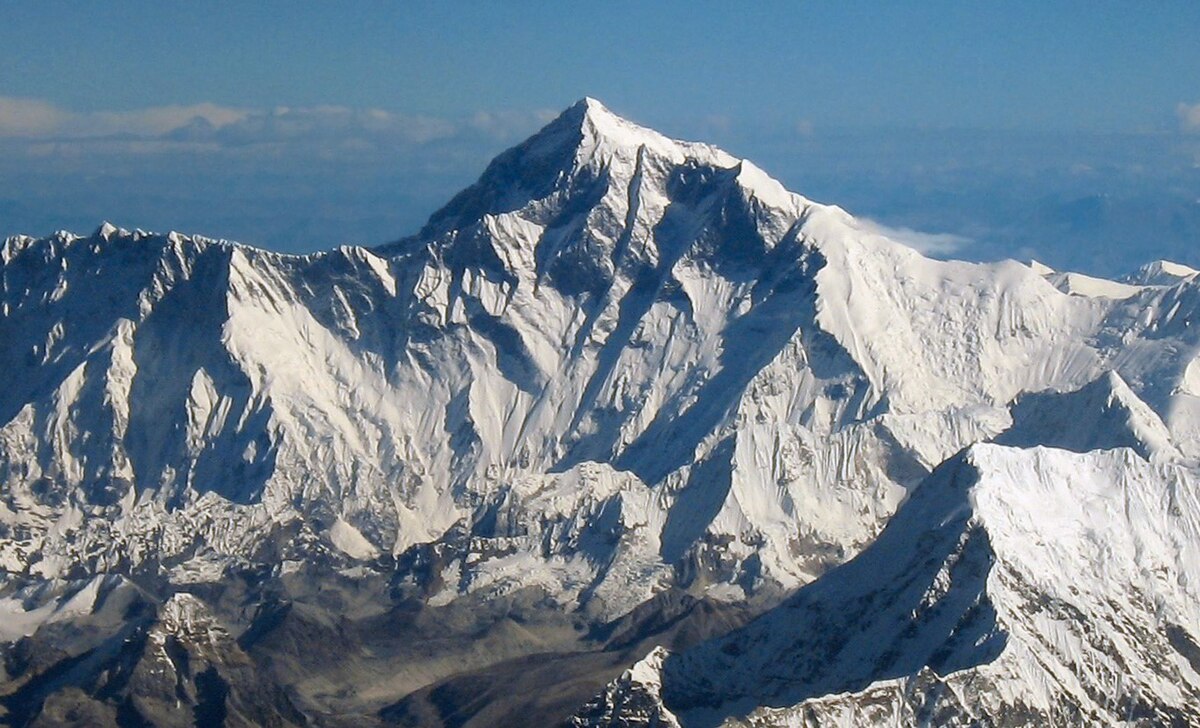Climbers typically ascend only part of Mount Everest’s elevation, as the mountain’s full elevation is measured from the geoid, which approximates sea level. The closest sea to Mount Everest’s summit is the Bay of Bengal, almost 700 km (430 mi) away. So to approximate a climb of the entire height of Mount Everest, one would need to start from this coastline, a feat accomplished by Tim Macartney-Snape’s team in 1990. Climbers usually begin their ascent from base camps above 5,000 m (16,404 ft).
It’s obvious once you think about it, but at what point would you consider it in daily life?
if measured from the base, Everest isn’t even the highest mountain on earth. So if you don’t start at sea level, did you really climb the highest mountain?
I have climbed the highest mountains
I have run through the fields
Only to be with you… Only to be with you…But what is the base?
Thing is, that’s a more complicated question than it sounds.
You also desecrate a sacred mountain and have to climb over plastic bags of shit and human corpses.
Just pave a road to the summit at this point.
I mean the corpses in their bright jackets are useful, they tell you about the dangerous spots! 💡
Here is a really good article about the topic. The gist is that typically in mountaineering, there’s not often an official definition of the “start point”, but the “end point” is back at the start, so people who die midway on the return journey don’t “count”. The “top” should be easy to define, but often, the top of a mountain is a large area, and you aren’t going to hike around looking for which part is just barely the highest. Also, some true summits are habitually avoided as sacred places to the locals.
soon we’ll find bodies near the beach and claim Mount Everest took another victim… there lays green sandals
So whats the time limit? I’ve been to the ocean, i just went home for a few years before going mountain climbing.
My house is base camp.
Did you walk the whole time?
Alternatively: TIL most of the people who climbed Everest only half-assed it.
Just rely on the Sherpas to hard carry them
It’s already pretty much a rich people hobby. There are many facilities and heavy assistance from locals. It’s dangerous still. But it’s not even among the top 5 most deadly, dangerous or difficult climbs. In really good weather you can pay for a helicopter ride to get you even further up from base camp thus making your climb shorter.
Pretty deadly for the sherpas though, who have to deal with the shit of the rich idiot tourists going there in massive numbers. So if they want to insist it’s extreme, at least there’s that.
Weak. To really say you’ve climbed Everest, you need to start from the Challenger Deep.
Is it really climbing if you don’t start at the planet’s core?
I read that in Boss Nass’s voice.
Here’s the actor with a story that includes a bit about coming up with Boss Nass’s voice, iirc
I believe the term for height from base is called prominence. The highest one can climb is Denali in Alaska, at around 5500m. Obviously omitting mountains that have their bases on the ocean floor like Mauna Kea ofc.
Prominence is a bit more complicated than that. It refers to the height of a mountain or hill’s summit relative to the lowest contour line encircling it but containing no higher summit within it. Everest’s prominence is actually still its height above sea level.
Everest is a bit unique in that regard since, as the highest peak, by definition it can’t have any higher peaks within any contour around it.
If you measure from the surrounding area, the Mauna Kea is higher than Mt. Everest.
I kind of like the argument that Ecuador’s Chimborazo is the tallest on the basis that it’s the farthest point of Earth from the centre of the Earth
I never realized it before, but Mount Everest is a name straight out of a fantasy novel. Like a slightly more polite term for Mount Death. Pretty badass.
Funnily enough, the man it was named after was against calling it that. It came about because the Tibetans and Nepalis on either side of the mountain used different names for it (Qomolangma and Sagarmatha respectively), so British surveyors concluded that there was no accepted name to put on a map and they would simply give it a new one. In English. George Everest, the prior top British surveyor in India, objected on the grounds that his name couldn’t be written easily in Hindi, but the Royal Geographic Society ignored him and the used it anyway
plus his name was said to have been pronounced “ee-v’rest” instead of “ever-rest” as the mountain is called today.
Yeah, but you gotta admit, the name is pretty bad ass
It definitely is
I have heard the (Nepali-speaking) Nepalis didn’t even have a name for it at that point, and I have a feeling Qomolungma wasn’t known to the Brits, because the mountain was surveyed from far away at that point.
Incidentally, “Tibetans and Nepalis on either side of the mountain”- it’s Tibetans on both sides. On the Nepali side are the Tibetan group known as Sherpa, whence we get the term Sherpa for a Nepali/Tibetan mountain guide. Further south than the Sherpa people are ‘Nepali’ people by ethnicity. (And of course properly there’s a lot more than two ethnic groups in a cross section of Nepal!)
Ahh, thanks! My knowledge of the region isn’t great, I just remembered that story off hand - and of course, that’s the story as told by the British colonial administration too
I suppose, in fairness, climbing the top part is a bit harder than climbing the bottom part.
Though, if you think about it, quite a lot quicker.









